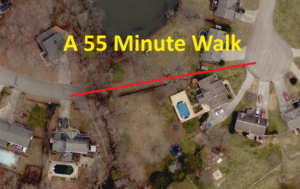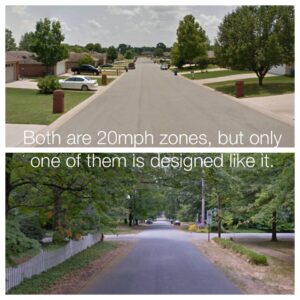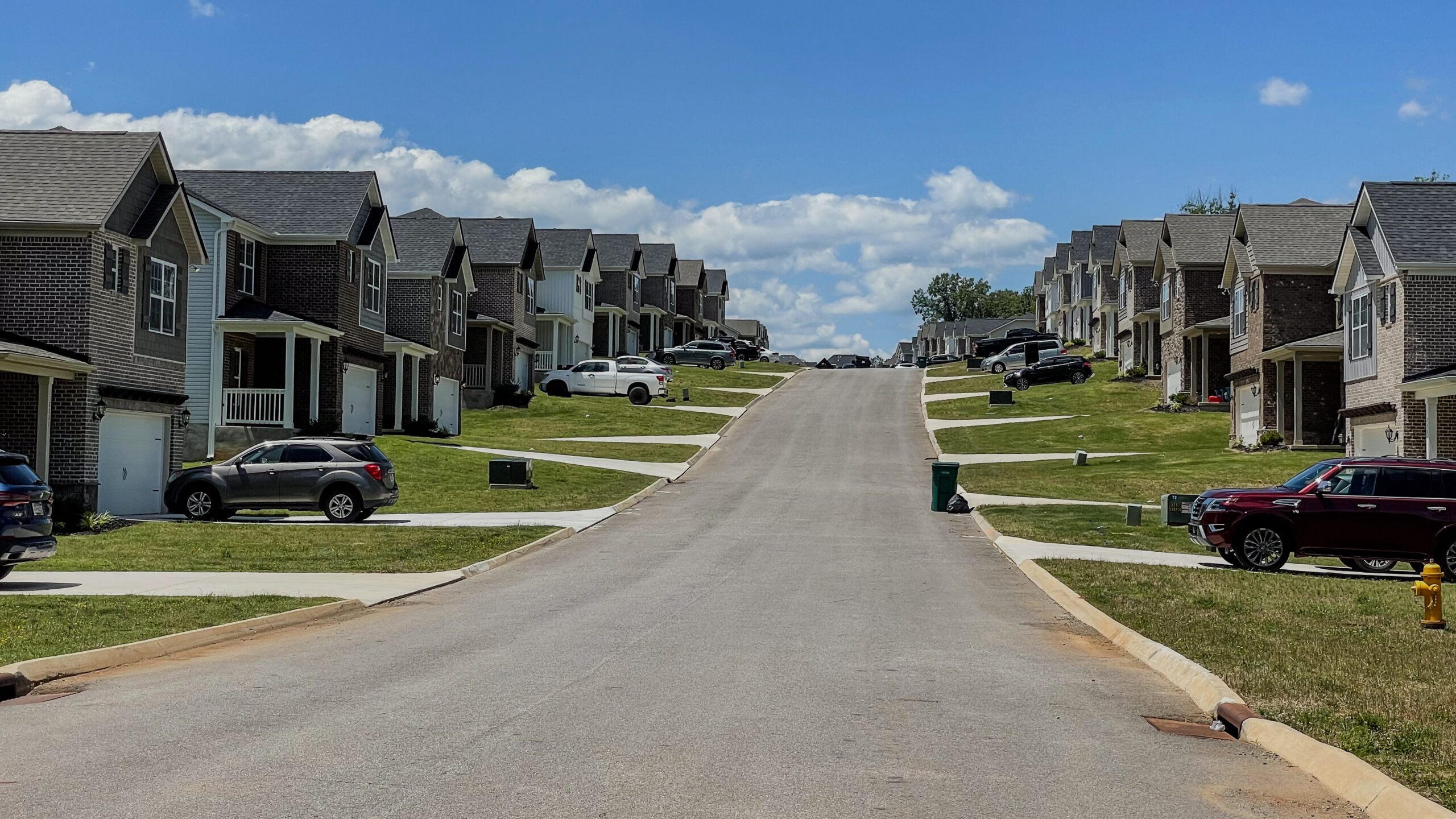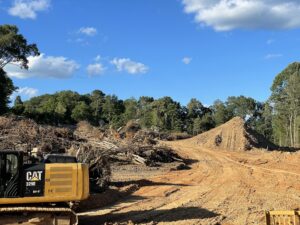Below is the Knox Community Planning Alliance (KCPA) Policy Statement for the new Knox County Unified Development Ordinance.
Knox County has kicked off the next phase of Advance Knox – the creation of a “UDO” or Unified Development Ordinance. The new UDO should combine multiple documents from zoning ordinance, subdivision regulations, stormwater management and other regulations, be modern, and simpler to navigate and understand.
This phase will also completely update the Knox County Zoning Ordinance. The ordinance was first drafted in the late 60s and early 70s and much of the ordinance has not changed since then. But we’ve added a lot of people. From 1970 to 2020, unincorporated Knox County’s population grew 160% to 264,725. We have more people who now have to live closer to each other than our 1970 vintage zoning ordinance anticipated.
Current development regulations set a very low bar for development in Knox County. A developer can acquire a lot and get approval to clear every living tree and grass off of it, grade it, build houses, not plant a single tree, and claim that the required detention pond provides “common area”.
As a reminder, The top 4 community priorities surfaced in phase 1 of Advance Knox, in ranked order, were:
- Infrastructure investment – efficient infrastructure investments that support and anticipate planned growth and are maintained through strategic, fiscally responsible decisions
- Conservation – conservation of natural areas and resources that include ridges and valleys, rivers and streams, wetlands, historic and agricultural assets and scenic views
- Housing Options – housing and neighborhood options that meet a wide range of types, locations, affordability to meet the need of a growing and changing population
- Community Character – strong places with distinct identities, including natural areas and development models that range from employment centers to rural communities and include walkable neighborhoods and mixed-use centers.
In the new UDO, KCPA hopes to see these improvements:
Design Standards
Design standards to ensure compatibility for different housing types and uses. Proposing a large 5-over-1 apartment complex next to existing half-acre single family residential creates conflict. We need design standards for when different housing types and uses are located next to each other that help with height, landscaping, lighting, setbacks. The UDO more importantly needs to clearly define what is, and isn’t, appropriate next to each other. Is an apartment complex at 12 units an acre appropriate next to single family at 2 units per acre? Today this ambiguity creates uncertainty and conflict. If we clearly define what is and isn’t appropriate, we remove that ambiguity and conflict.
Require a mix of housing where mixed is encouraged. This addresses how to implement affordable and diverse housing types. It has been said that land price is a main driver of affordability. If true, then we can decrease housing costs by increasing density such as allowing or even mandating duplexes, triplexes and quadruplexes interspersed with single family in new subdivisions. We should be setting minimum densities in areas where we desire and need increased density.
If we’re going to be living closer together than we did 70 years ago, we need to prevent the trespass of noise, light, and noxious fumes across property lines, preventing owners and residents from enjoying their own property and uses. We need quantitative lighting ordinance standards based on Dark Sky model lighting ordinance. For noise, the current 85 dB limit applying to all commercial or industrial property means that any commercial property, adjacent to residential, will be able to emit noise in excess of city traffic levels. No adjacent resident will be happy about that. We also need to recognize the significant impact of vehicle traffic, especially drive-thru uses, and the emission of noise and fumes to adjacent properties. Locations for drive-thrus and fueling stations should be limited to commercial areas and prohibited next to residential, agricultural and open-space.
Require true mixed-use in areas that our plans encourage it. Advance Knox proposes to add housing along corridors and other areas appropriate for mixed-use developments. Since its passage, there have been proposals for residential townhomes, or standard neighborhood commercial uses, in these planned areas. Just building townhomes doesn’t give us the density and commercial uses envisioned by Advance Knox and that the fiscal impact projections are based on. We may need to require that developments in those areas have a minimum amount of residential and office/commercial incorporated, so that we don’t see a small subdivision built on a highway where Corridor Mixed-Use is envisioned and expected.
Require Historic Impact Assessments – Knox County’s history goes back more than 200 years. has an inventory of historic structures and sites, but there is no consideration required if a development that is proposed adjacent to that historic resource. Whatever the adjacent property owner wants can be built, even if it clashes and takes away from the historic setting and context of that historic resource. Historic Impact Assessments should be required to be conducted if property contains or is adjacent to an item in the historic resources inventory.
Heavy Industrial Uses in non-Industrial zones. In particular, the Mining use should be removed from the Agriculture zone.
Subdivision Design
 Require Neighborhood Connectivity. In Knox County, neighborhood connectivity is encouraged but not required. The Planning Commission and County Commission do not make it a requirement of rezonings or development plans. We know what happens when we don’t connect new subdivisions. Without requirements in the new UDO, we will continue to make this mistake and build a county where our neighborhoods and communities are disconnected from each other and our community resources like schools, parks, and natural areas.
Require Neighborhood Connectivity. In Knox County, neighborhood connectivity is encouraged but not required. The Planning Commission and County Commission do not make it a requirement of rezonings or development plans. We know what happens when we don’t connect new subdivisions. Without requirements in the new UDO, we will continue to make this mistake and build a county where our neighborhoods and communities are disconnected from each other and our community resources like schools, parks, and natural areas.
Tree Preservation Plan. We have experience with how developers develop in Knox County in the absence of codified requirements. Many applicants have stood up at the podium and said “We don’t want to cut down any more trees than we have to. It’s expensive to cut down trees.” Then, after they get approval for the development plan and their grading permit, they promptly clear cut and grade the entire property. We must require tree preservation plans, and should adopt tree ordinances similar to the city, with a minimum number of trees required per lot and per acre.
Reduce required road widths in new subdivisions. 26 feet wide encourages speeding, and also encourages parking in the public right-of-way instead of on private property. See this Strongtowns post (https://www.strongtowns.org/journal/2019/1/8/new-20-mph-street)

Stop requiring curbs on all new subdivision streets. Curbs eliminate vehicles pulling off the road (or even partly off the road); instead the vehicle stays parked in the public right-of-way. For roads without sidewalks, a curb keeps a bicycle pedestrian from gently crossing over into a yard if there is an oncoming obstacle and the bicycle or pedestrian needs to swerve / get out of the road. People with compromised mobility have issues stepping over curbs. Grass swales would be preferred instead. Swales cost less to build than curbs.
Open Space and Farms
Open Space Management Protection. Open space is not just parks and recreation amenities. Advance Knox identified Conservation as a key public priority. The bench-mark in new zoning and subdivision regulations must mandate open space protection. This should include determining conservation areas for open space, establishing permitted and prohibited uses of open space. The adopted Hillside and Ridgetop Protection Plan has an excellent framework in Appendix F.
Incentives for keeping property as agricultural / conservation. Today’s zoning ordinance includes no incentives for a property owner to voluntarily place a more restrictive zoning, such as Agricultural Conservation, on their property. The appraisal value is de-minimis between agricultural and agricultural conservation property. Possible incentives could include having agricultural conservation zones as a negative factor for adjacent plan amendments and rezonings (i.e. if property is zoned agricultural conservation, that would be a reason against a plan amendment or rezoning that an adjacent property would propose).
Development of Agriculturally-zoned land. Counties that have successfully slowed the development of agricultural land have implemented development densities of 1 house per many acres. In Tennessee, the most restrictive has been 1 dwelling unit per 5 acres in Williamson and Davidson Counties. Discussion in the National Agricultural Land Network (membership required) indicates some slowed loss of agricultural land by looking at densities more of 1 unit per 80 acres.
Assessment of farmland soils. Prime and locally important soils should be identified on zoning and building applications. The UDO should adopt specific criteria for limiting or prohibiting development on those soils
Zoning Administration
Rezonings. The UDO needs to clarify precisely what is a substantially changed or changing condition. Right now this is a subjective statement and can often be argued in favor of an application or against an application. This would provide more certainty in the application and analysis process – certainly for both the community and the applicant. It would stop speculative rezonings, where an applicant attempts to make a bad case for the bodies and it’s more “who you know” for getting approved. Saying that a road project is planned 2 miles away from a site is not “changing conditions” to justify a rezoning.
Stop using the availability of utilities to justify a rezoning. As it stands now, it seems that utility districts are in charge of where development occurs, rather than land use planning. Their mission is to provide service to any customer who desires it. If an applicant can get a utility to say that the utility can provide service (and doesn’t have to disclose the cost and how the applicant can make this feasible), the applicant then uses that to justify a “change in conditions” even if it may cost millions of dollars that they can’t afford.
Appeals to legislative bodies. Allow appeal of administrative actions, planning commission, and BZA to the legislative body (county commission) similar to how Knoxville City Council does. These appeals are rare, but providing an appeal to the legislative body serves two purposes: 1) it brings lower body actions to the attention of the legislative body, which may not be aware of the types of decisions occurring at BZA or planning commission, and 2) it places the final administrative authority into the hands of elected officials instead of appointed officials, allowing residents to have accountability at the voting booth.
Grading permits. Neighbors complain of adjacent developments grading up to the property line, which destroys roots resulting in dead trees on their own property. While property law establishes means to file suit for damages, this places the burden of documenting damage, retaining counsel, filing suit, collecting and enforcing on the neighbor who was just trying to enjoy their property. The new UDO should adopt measures that prevent grading and damage to roots in the first place, instead of placing the burden on Knox County residents to react and deal with damage.
UDO Development and Adoption Process
While the first phase of Advance Knox did a good job of collecting public information, the final plan was unveiled and discussed without the benefit of public open houses. The only way to submit feedback was structured public forums or structured comments. There was not an opportunity for the public to engage with planners, stakeholders, and elected officials in a more informal, conversational manner. There must be open house meetings to discuss the draft udo ordinance, solicit feedback and suggestions, and make modifications before the legislative adoption process starts. This is the same process that was successfully used with Sector Plan updates – 1 round of background info and request for input, and a 2nd round presenting the draft sector plan updates (maps + text).


